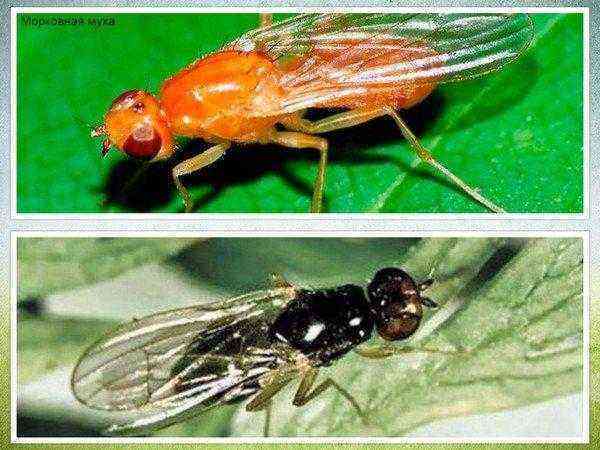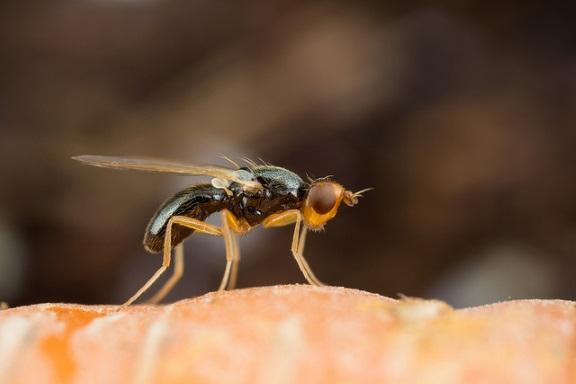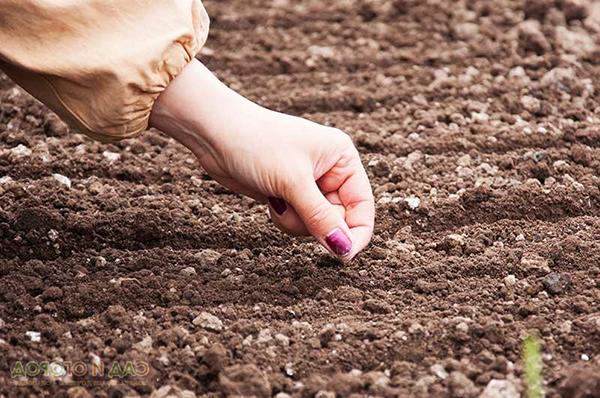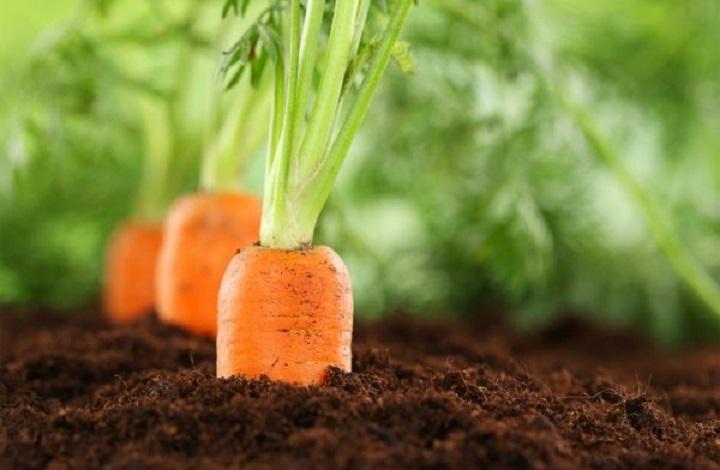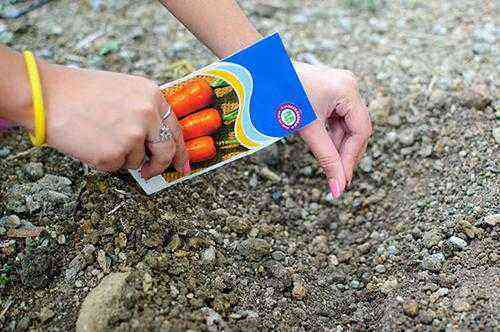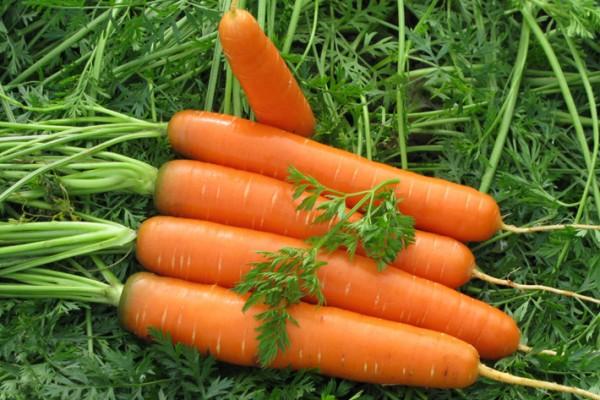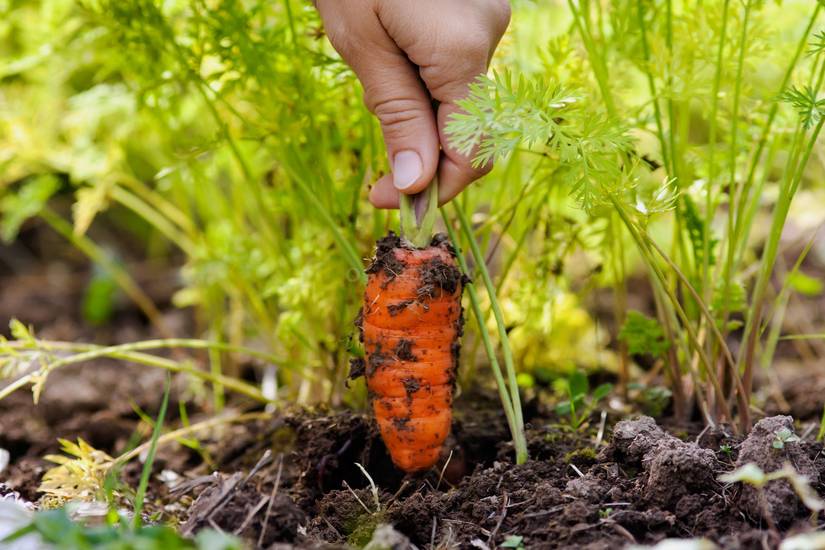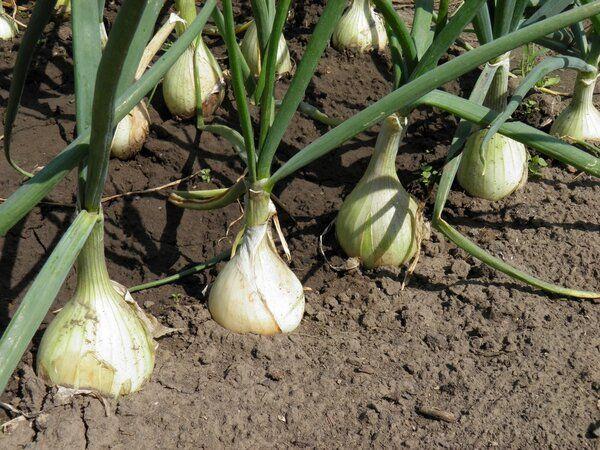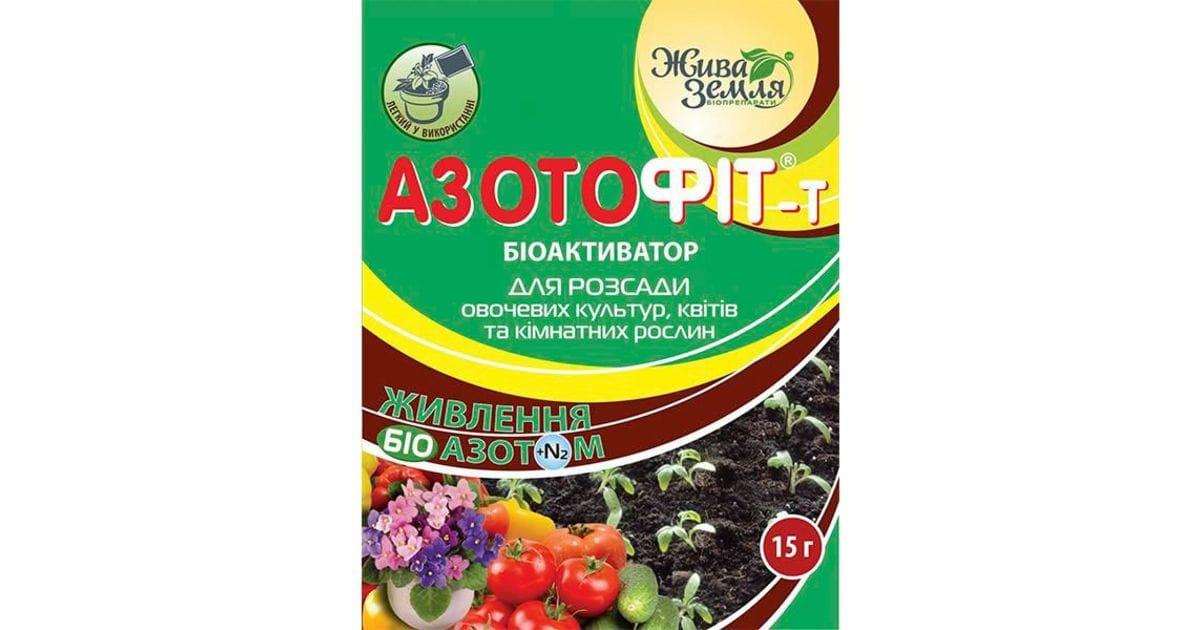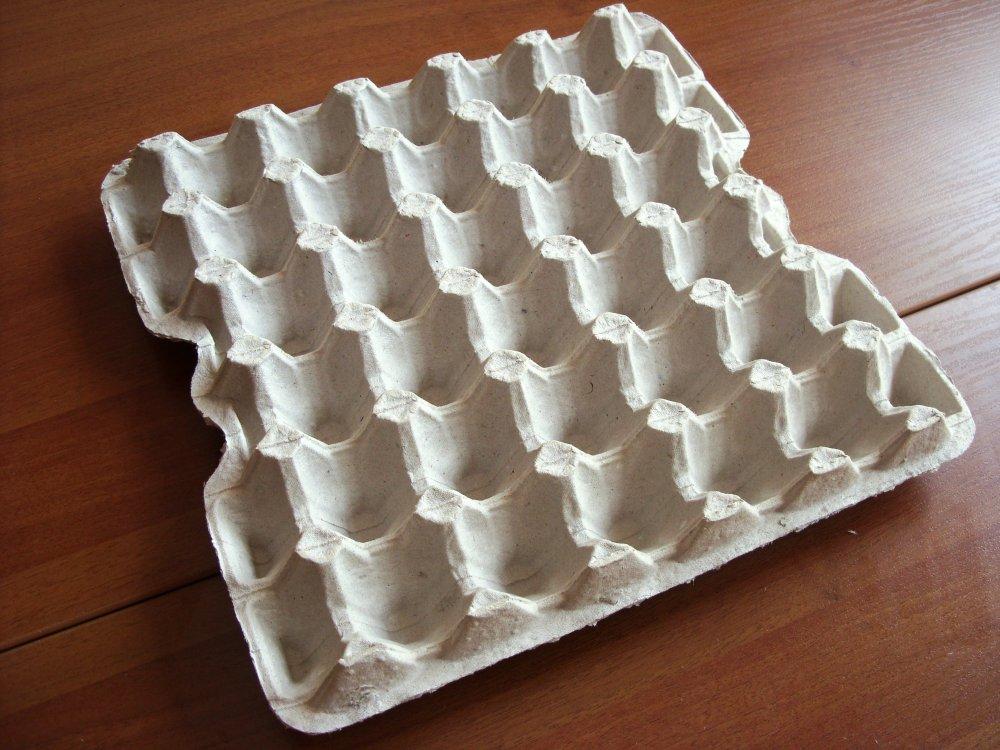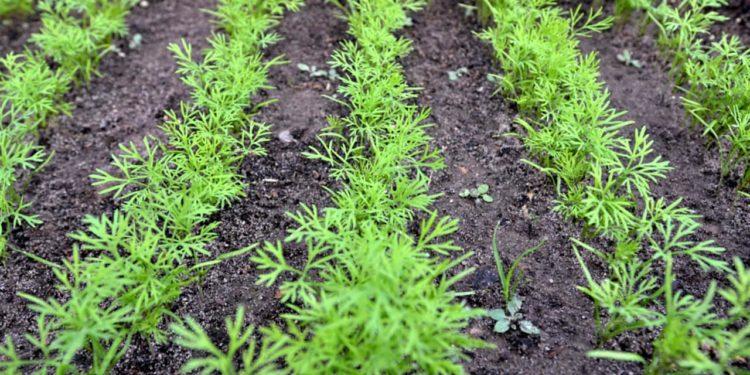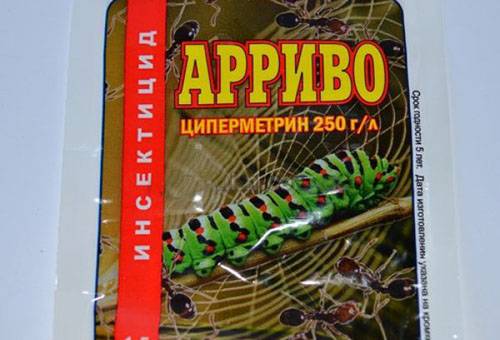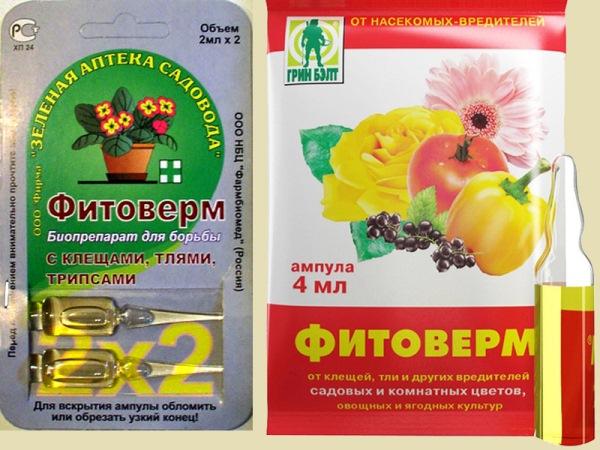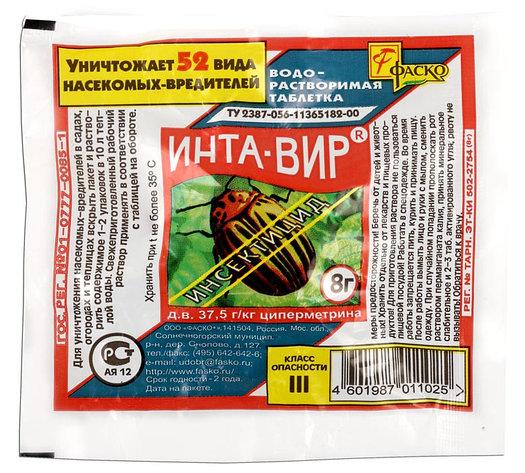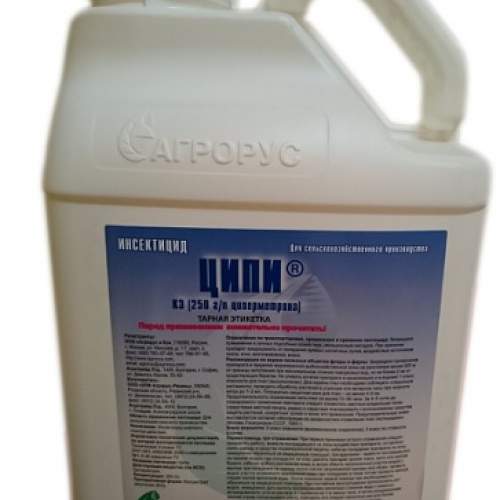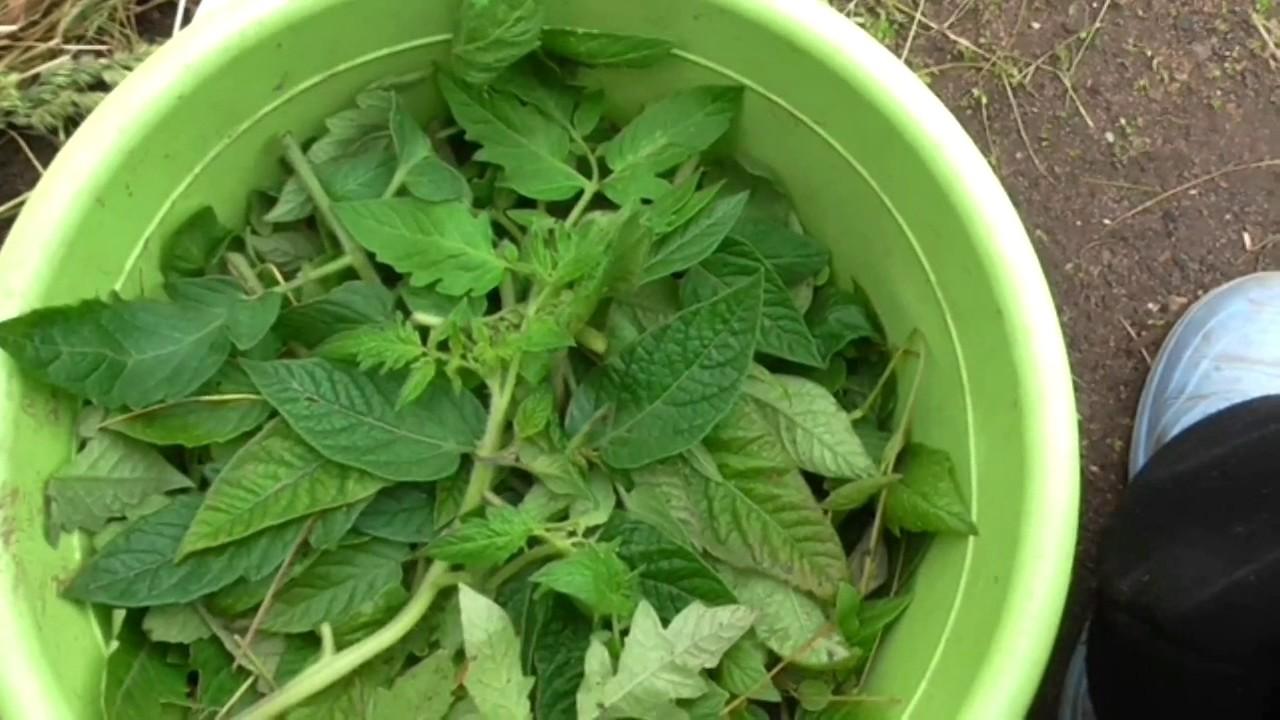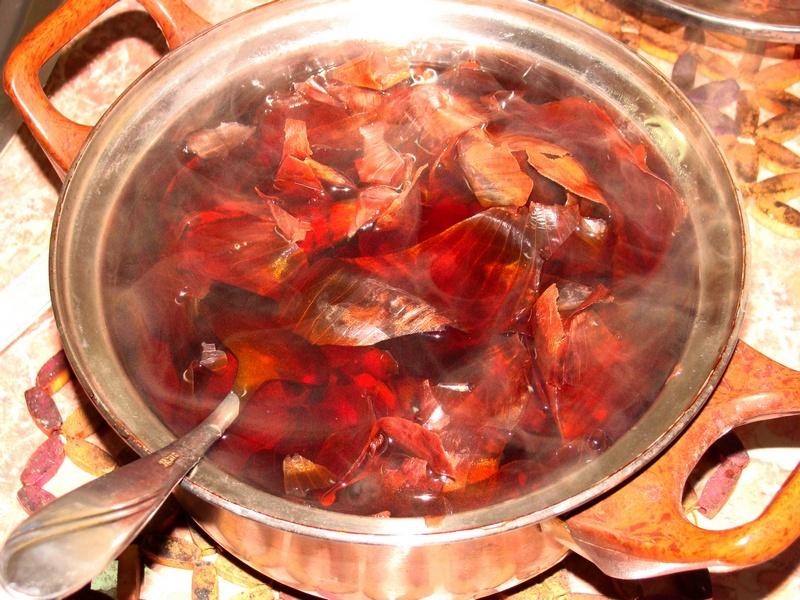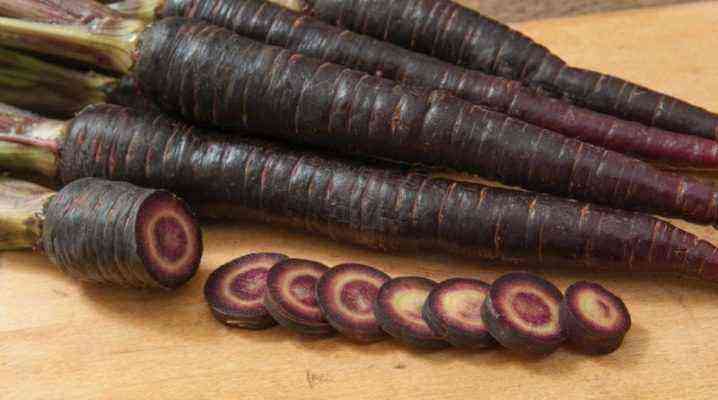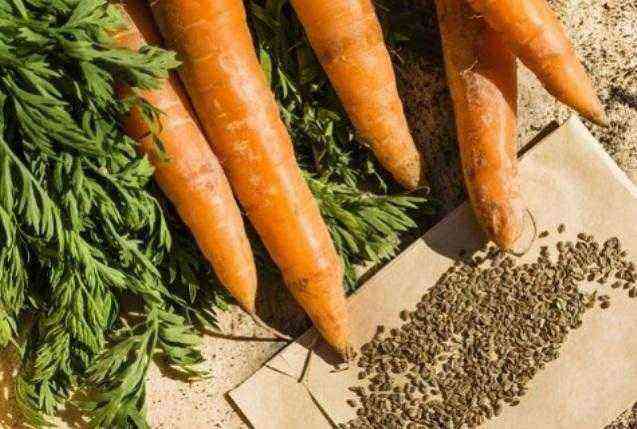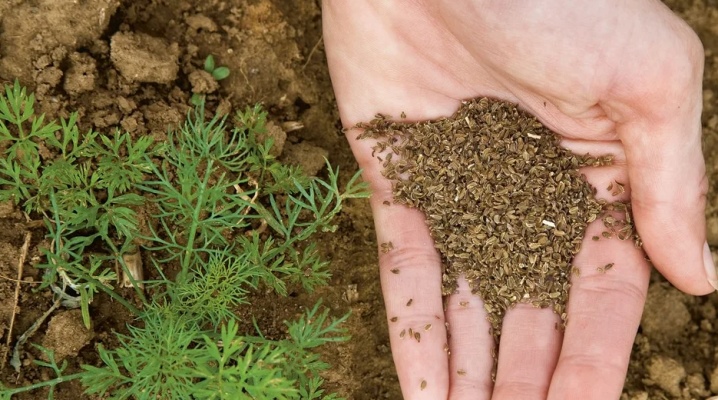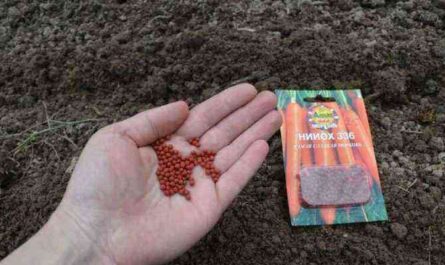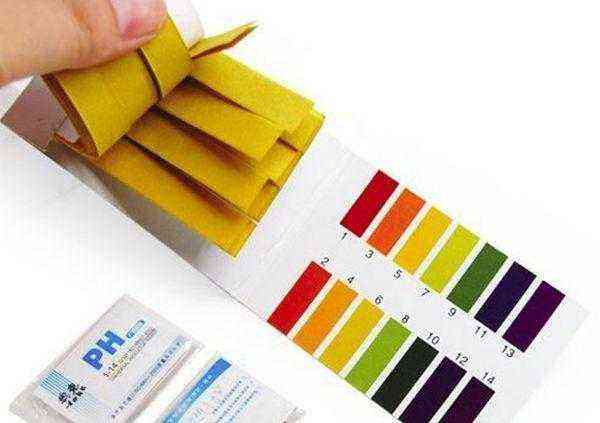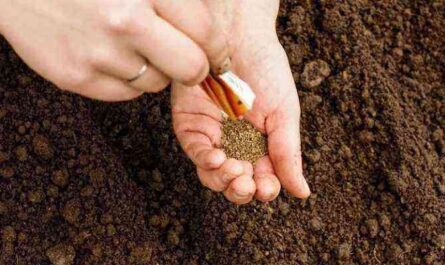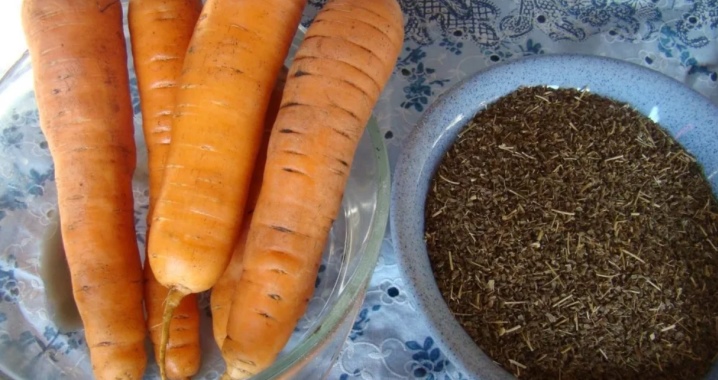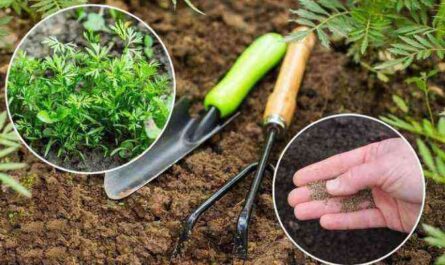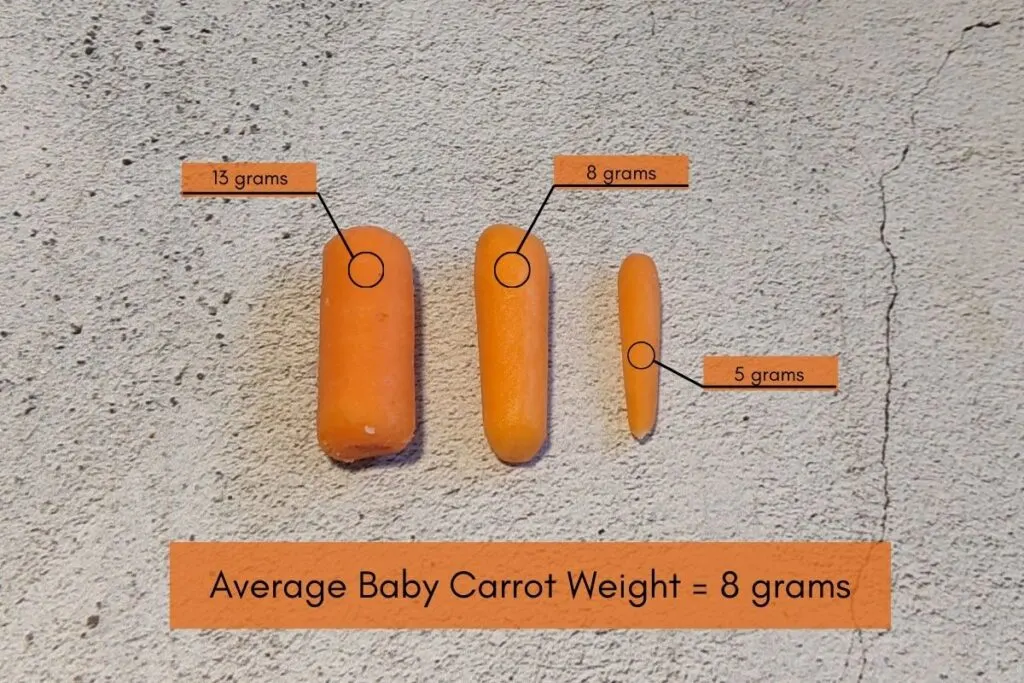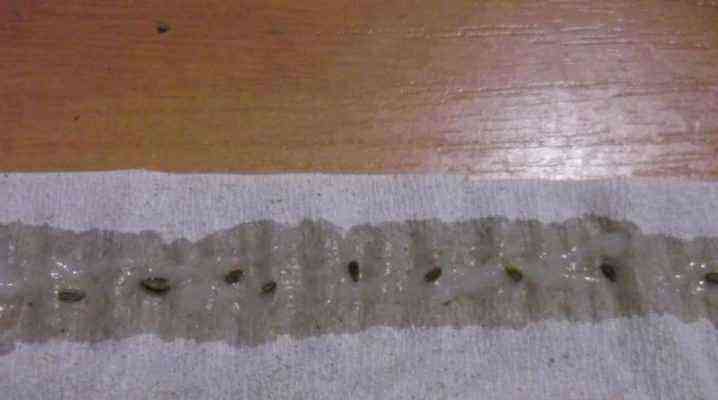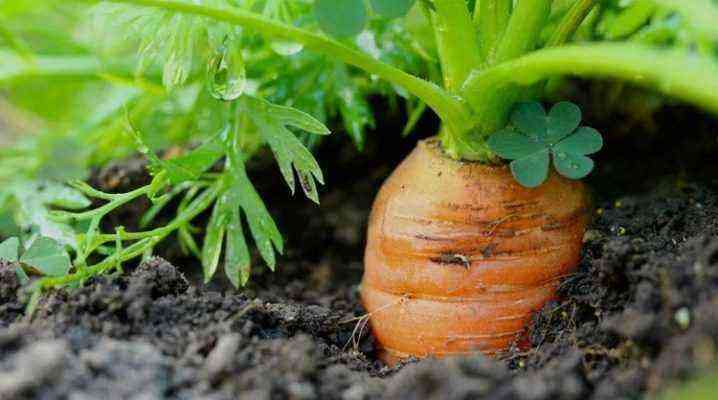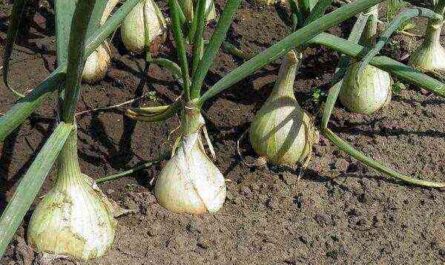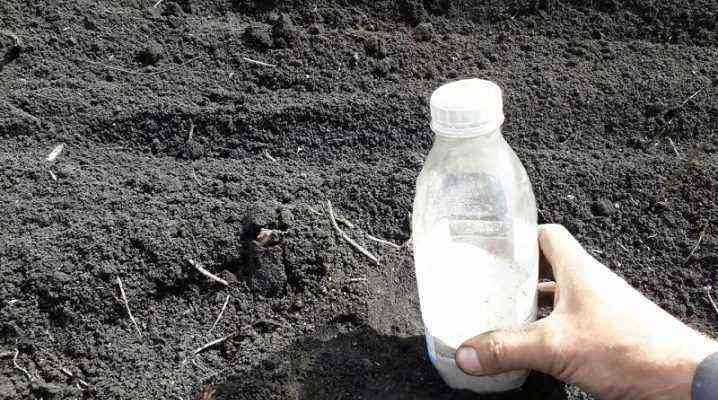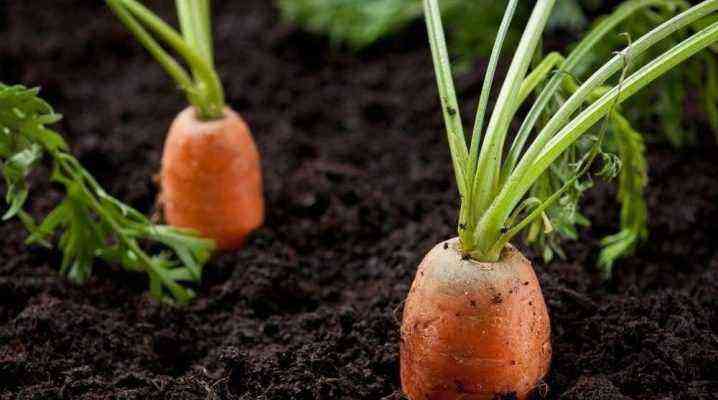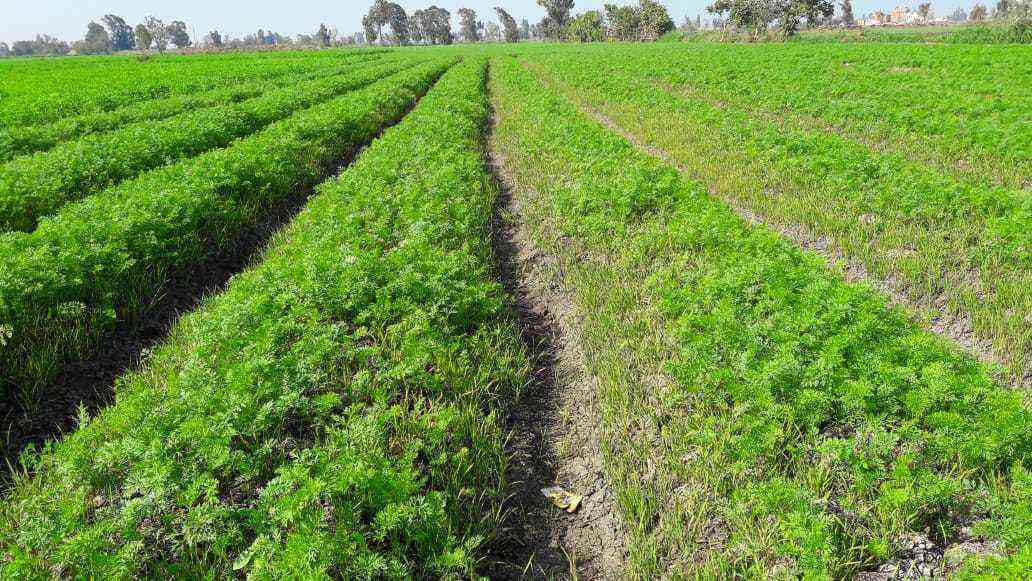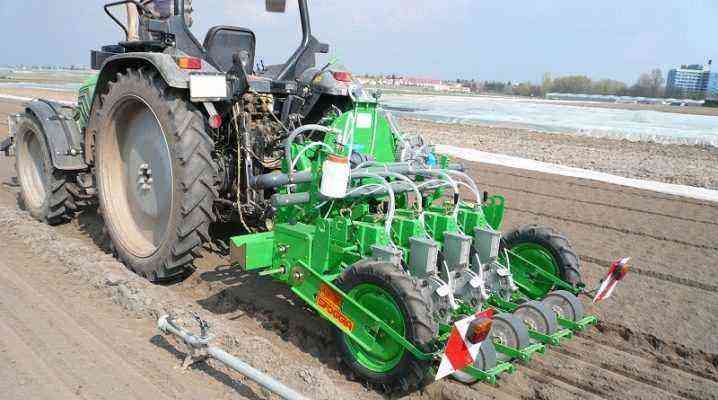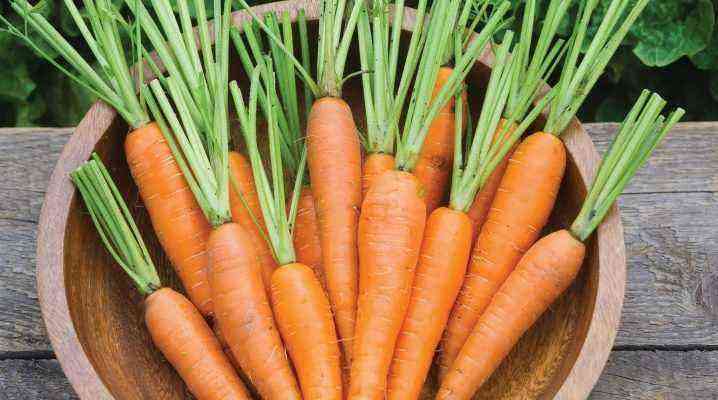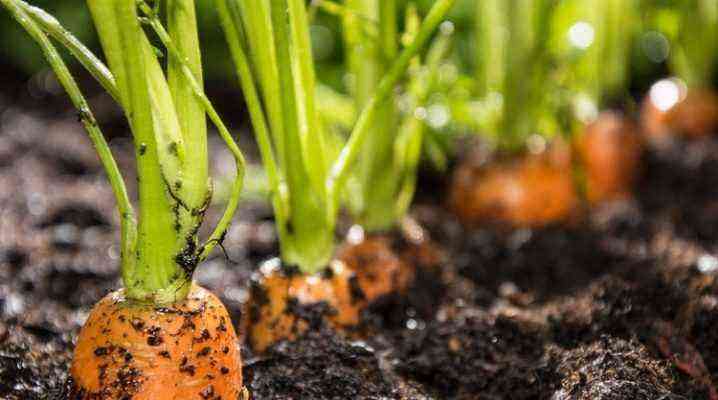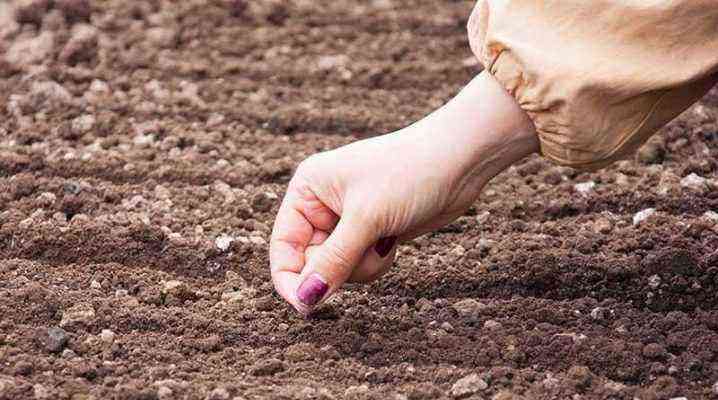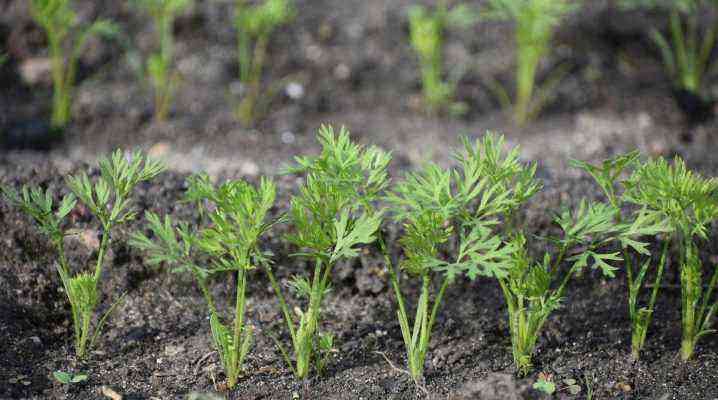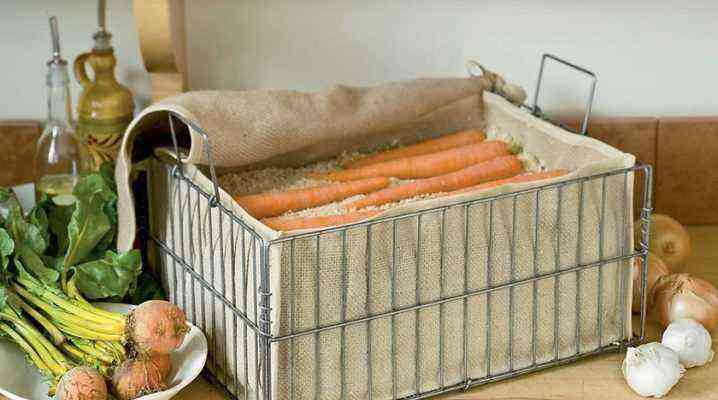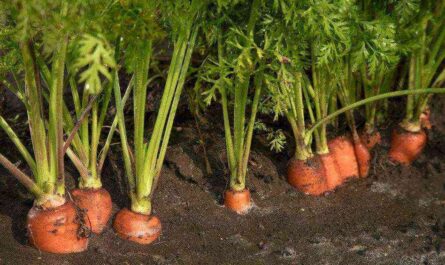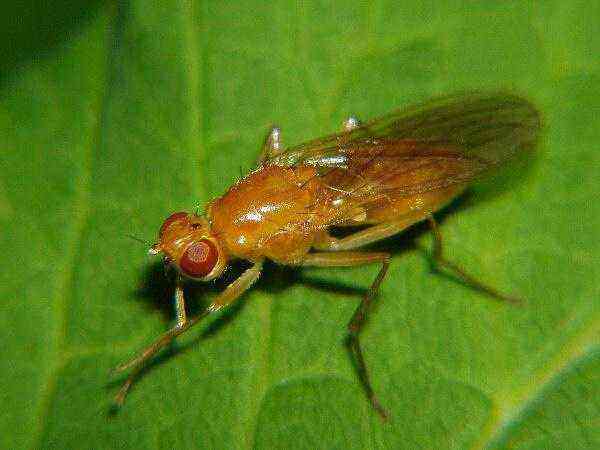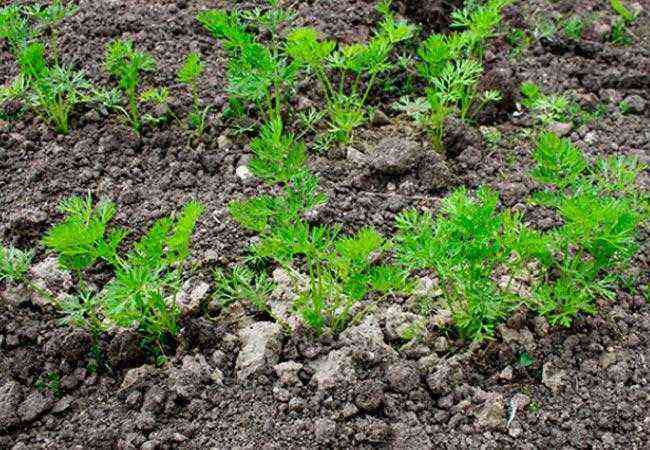The appearance of a small dark fly on the beds of carrots threatens with a complete loss of the root crop. Small insects multiply rapidly and, in the absence of timely measures, infect the fruits with larvae that quickly eat juicy young carrots. Even slightly damaged specimens become tasteless, lose their keeping quality, and quickly rot in storage. Consider what kind of insect a carrot fly is, and how to deal with it, the most reliable and necessary measures to eliminate the pest from the garden.
Reasons for appearance and description
The favorite food of carrot fly larvae is juicy root crops of several types of garden crops:
- carrot;
- celery;
- parsley;
- parsnip.
Carrot beds are an ideal place for laying eggs. There is plenty of food, culture is sown in orderly rows. When the eggs turn into larvae, succulent food is in abundance. The harmful insect loves warm, humid places, but the fly does not lay masonry in simple, loose soil. She is looking for a place where the larvae are provided with food and development.
Reference: the smell of carrot tops attracts flies, thickened plantings create quiet comfortable corners for breeding.
Excess watering, high soil moisture are well suited for breeding. Carrot flies are widespread in all regions of the country; the pest breeds especially well in conditions of high humidity.
Excessive watering of beds and an excess of carrots per meter of area provoke a rapid increase in the population.
The main reason for the annual appearance of carrot flies is the infestation of the earth with pupae and insect larvae. They tolerate wintering well, in the spring they enter a new life cycle. The constant use of the same areas for planting, ill-conceived crop rotation and the lack of a proper pest protection system are the reasons for the annual invasion of carrots.
The carrot fly looks like an ordinary one: the body is 4-5 millimeters, the color of the upper body is black. In the photo it is noticeable that the head has a brown-red color, the paws are dirty yellow. The wings are transparent, with veins, like most varieties of flies. A feature of the species is a low flight, which summer residents use in the fight against insects.
Life cycle
In development, this type of fly goes through a full cycle. Adults lay eggs twice a season. The first year starts in May and ends with the laying of eggs (about 100 pieces) in the tops of root crops protruding above the soil. In the absence of carrots, in the territory of the garden, the fly will lay eggs in turnips, celery, dill root.
The fly flies low, feeding on the nectar of umbrella plants. The laying period of eggs is extended for 30-45 days.
The eggs are small (0.6 mm), larvae appear from them after 10-14 days. It is the larvae that are the pests of root crops. They immediately begin to feed, gnawing passages in the carrot pulp. Larvae – 6-7 millimeters, look like brown worms.
There are two stages, taking a total of 60-75 days. After that, they crawl into the soil and pupate. New flies emerge in July-August. Pupae successfully overwinter in the ground, with the onset of spring they continue the cycle of transformations, give life to new flies.
What harm does
Carrot pests are larvae that, if left unchecked, can cause serious crop damage. Eggs and larvae fall into storage during harvesting, and continue to eat carrots in winter. Even slightly infected specimens lose their taste and quickly rot.
A small fly is difficult to notice near the beds. Signs of infection of plantings and fruits:
- change in the color of the tops – the leaves become an unnatural red-violet color, gradually turn yellow and dry out;
- when the upper part of the carrot is exposed, brown dots from the movement of the larvae are noticeable;
- extracted carrots are covered with brown spots, have an unpleasant odor;
- fruits are twisted and deformed.
Pathogenic microorganisms, fungal spores penetrate through the damaged surface. Carrots rot right in the ground, the green part dries out and falls. Even a fruit that has not completely died becomes unsuitable for food – the flesh coarsens, there is no juiciness and aroma.
Effective methods of struggle
It is not easy to overcome a carrot fly; methods to prevent its occurrence are considered the most effective. When the eggs are thrown, the root crops are infected, it is no longer necessary to talk about a good harvest.
All methods of struggle are used together, an integrated approach is used. Sophisticated agricultural technology prevents the appearance and spread of flies. Folk and chemical methods scare away from the beds and destroy adults and larvae.
Agrotechnical
Knowledge of agricultural technology, that is, the farming technology necessary for the full growth of a crop, helps to reduce the risk of pest reproduction in plantings. Agricultural techniques for growing carrots consist of many necessary conditions. Let’s consider them in detail.
Proper planting of carrots
Carrots should not be thickened when planting. When using dubious seeds, gardeners try to scatter more, fearing that a significant part will not sprout. Experienced summer residents plant carrots in separate small groups, at a considerable distance from each other, to protect against flies. At the same time, there are no significant plantations with dense tops and high shading, where it is constantly humid, the foliage rubs in the wind, attracting a fly with a smell.
An excess of plants in the garden creates conditions for the quiet reproduction of the fly in the thickets. When thinned, the aroma of carrots spreads throughout the area, attracting the pest and finding a desirable place for laying eggs and hatching offspring.
The best option is to purchase quality seeds and plant carrots a few centimeters apart so that there is no need to thin out.
Use of proven varieties
There are no varieties of carrots that the fly is afraid of and avoids. Complete resistance against the pest does not show any type of culture. A study of the addictions of the carrot fly showed that it was attracted to varieties with a large amount of chlorogenic acid in the foliage. Excess carotene and sugar in fruits are unpleasant for breeding.
Breeders have created varieties in which the fruits are sweet, and the tops do not attract adult insects. Note that if there is a bed with other types of carrots nearby, the fly will fly away there, but in their absence it will use the existing ones for reproduction. We single out several varieties that are considered the most resistant against the pest.
Vitamin 6
It is grown in all regions of the country, including the coldest. The sugar content is 7-11%, which, according to the breeders, protects against the carrot fly. Root crop in the form of a cylinder with a blunt end. Weight – up to 170 grams, diameter – centimeters. The core is unexpressed, in the shape of a star. The crop is harvested in August-September.
Vitamin 6 is distinguished by good preservation of fruits, resistance to cracking and drying out in storage. Sweet taste, high content of carotene make the fruit useful fresh.
Perfection
Late maturing variety, used for winter storage. High levels of carotene and sugar. Perfectia easily tolerates drought and lack of watering, with proper irrigation, it resists well the carrot fly. Perfectia cylinders weigh up to 190 grams, the variety produces up to 4.5 kilograms of fruit per square meter. Can be sown in winter.
Losinoostrovskaya 13
The yield of the variety is up to 7 kilograms per square meter. Fruits of pronounced orange color, well stored until the end of spring. The weight of the root crop is up to 100 grams, the skin is loose, glossy.
Grown in all regions, the variety is resistant to flowering and temperature drop. The fruits grow down, do not appear above the soil, therefore they do not turn green in the upper part. Use in any way, including for baby food and juice.
Nantes 4
A popular variety, characterized by even, identical fruits. Lies until a new harvest without loss of quality. Cylinders of Nantes 4 grow up to 160 grams, have an unexpressed core – juicy and slightly rounded or angular. Nantskaya 4 is the best variety of the Russian selection group, it successfully develops in many regions with different climates. Requires regular watering, loosening, planted in well-lit areas.
Unparalleled
The variety is cultivated in most regions, known since 1943. Differs in a small number of eyes on carrots, lateral roots are thin. The color of the pulp is even, the middle is faceted. Late variety, sings up to 120 days. Lies firmly, retains taste until the end of storage. This variety is recommended for fresh consumption due to its good taste.
The fruits of the Incomparable are bright orange, weigh up to 210 grams, the yield is up to 7 kilograms per square meter of beds.
Calgary F1
The variety is classified as resistant to carrot flies. Obtuse-conical fruits grow up to 22 centimeters. Well stored, without losing taste and without cracking. The yield is high, carrots ripen in 3 months. Among other varieties that summer residents consider resistant to flies, we highlight – Nantik Resistafly F1, Amsterdam, Shantan.
Site Selection
Carrots need to be watered often, but damp low-lying areas are not used for planting. It is better to choose a small hillock, open to the sun and wind. Good ventilation of plantings will provide additional protection against carrot flies. If there is no dampness around, the insect will find areas with a more humid environment.
The best neighbors for carrots:
- bow;
- garlic;
- Strawberry;
- tomato;
- potatoes;
- peas, beans;
- salad;
- radish.
Do not plant next to carrots due to the risk of common pests:
- dill;
- parsley;
- celery;
- horseradish;
- beets;
- under the apple trees.
There should not be dense thickets of weeds nearby, which are the habitat of adults. The carrot fly also loves wild umbrella plants, and settles in their bushes.
Neighborhood with onions
The beneficial mutual influence of onions and carrots is confirmed by agronomists. Cultures mutually protect each other from pests.
The smell of onions repels the carrot fly, and the tops of the root crop drives away the onion. Summer residents skillfully use this sympathy by planting crops in parallel rows.
What is important to consider:
- different watering times; it is better to plant crops not together, but in separate beds, with separation;
- you need to plant onions and carrots within the recommended time frame for them, which again requires separate beds.
By observing these conditions, summer residents improve the development and protection of both plants.
Refusal of manure
According to tradition, it is believed that manure only benefits during the growing season. Beds under carrots do not fertilize with manure. If organics have been introduced, you will have to choose another site for carrots, and plant a crop on this for the next year.
Carrots on manure will grow with coarse lateral roots, bearded, and a fly will gladly lay its eggs near loose fertilized soil.
Planting time
Protection against flies is considered the earliest possible planting time, when the larvae are not activated in the soil. The best time is mid-late May, depending on the region.
Autumn garden digging
The larvae and pupae of the fly remain in the soil, fall into a stupor for the winter period, and continue to develop in the spring. The autumn digging of the site helps to disrupt the favorable conditions for wintering. It is important to remove all the remnants of organic matter from the ground – roots, pieces of carrots, tops. Eggs and insect larvae are especially carefully selected from the soil.
In winter, they dig to the maximum depth, leave the layers of the earth unbroken, they are turned over, raising the inner part to the surface. So the soil is ventilated, it freezes more strongly. Comfortable conditions for wintering are violated, larvae and pupae die.
Right Ancestors
Crop rotation is used to improve soil composition and protect against pests. Properly chosen rotation of crops for growing on the site reduces the risk of infection with common insects and diseases. Carrot beds are regularly moved to another place so that in the absence of their favorite food, the larvae and pupae die in the soil. You can return carrots to their original place only after 3 years. Let’s determine the best predecessors for carrots.
Tomato
Tomatoes do not have common pests with carrots, so next year it can be sown in place of tomato beds.
Garlic
Smelly garlic contains essential oils that are unpleasant for carrot flies. The particles left in the soil from last year will protect the carrots from the fly next season.
Bow
Onion, according to agronomists, is the best friend, predecessor, neighbor for carrots. The mutual influence of crops helps them cope with the invasion of pests. The green part of the onion is able to scare away carrot flies, the bulb particles remain in the soil and continue to protect carrots for the next year.
Processing with biological products
The use of biological products for seeds and young plantings of carrots improves immunity, stimulates growth and development. Carrots become more resistant to pests, more easily tolerate temperature changes.
Azotophyte
The biological product is made on the basis of nitrogen-fixing bacteria, which nourish the seeds and young shoots with nitrogen. This accelerates the set of green mass by carrots, gives the plants the strength to resist the invasion of the fly. It also contains fungicides, amino acids, vitamins that help protect young sprouts from adverse conditions and diseases.
During the preparation of the seed material, the seeds are soaked for 1-1.5 hours in a solution of Azotophyte and then dried. During the growing season, it is allowed to water under the root and spray the tops regularly, after 10-14 days.
Preparation Trichodermin
The remedy is classified as biological, it is prepared on the basis of the fungus Trichoderma Lignorum, vitamins and barley extract.
To increase the stability of carrots, several methods are used:
- seed treatment;
- spilling the soil in autumn, spring, beds during growth;
- spraying the green part.
Trichodermin protects carrots from various types of pests, strengthens immune forces, accelerates the growth and ripening of fruits, and increases productivity.
Moderate watering
Carrots require regular watering to grow, but excess moisture attracts carrot flies. You need to choose the right irrigation scheme so that the water does not stagnate in the soil, goes to the root crops. In wet weather, watering is reduced, drainage is carried out.
It helps to retain moisture mulching the beds with organic matter. Mulch covers the soil and tops of the carrots and keeps weeds from growing. When the top layer of the earth dries out, it is useful not to water the beds again, but to loosen the soil.
Use of egg trays when planting
Inventive summer residents have come up with a simple way to provide each carrot with a personal territory, to protect it from thickening and the need for thinning. Cardboard cells for eggs when planting are used in several ways:
- Sowing carrots at home in egg cartons. With the establishment of the desired weather, cells with young seedlings are transferred to prepared beds. When planting, holes are made under the carrot seedlings so that they can more easily break through the bottom.
- Using cells for marking beds. They are simply pressed down to the ground, then removed. Seeds are planted in the holes, ensuring the desired distance for each carrot.
- Cells with cut holes are laid out on the garden bed, sunk into the soil and filled with earth. Seeds are thrown into nests reserved for eggs.
The containers themselves act as mulch, decomposing in the soil.
The use of spunbond
Carrots grow well at low temperatures, but covering the ridges with spunbond creates more comfortable conditions for seed germination and development of young growth. If the beds are covered tightly, the fly will not be able to get inside and throw eggs.
Some gardeners cover the sowing with non-woven material only until mass shoots appear. Others leave the spunbond for a longer period, especially when growing early varieties of carrots. With prolonged use of covering material, the edges must be carefully sealed so that the carrot fly cannot penetrate the seedlings.
Use of chemicals
Many summer residents prefer to use chemicals against carrot flies. When it is justified and necessary:
- with an annual invasion of a fly, a strong infection of the site;
- on large carrot plantations;
- the impossibility of planting a crop far from last year’s beds.
The industry offers a wide range of chemicals that are effective against the carrot fly.
Important: the scope of the drugs is large, with one tool you can protect carrots from different types of pests without dealing with an accurate definition of the species.
Arrivo
Sprayed on tops at the rate of 1.5 milliliters per 10 liters. It is enough to process 1-2 times during the summer of the fly.
Decis
Well protects carrots from different types of flying pests. Doesn’t wash off with rain. Decis is not used if there are bees and beehives on the site. Toxic to some types of horticultural and horticultural crops.
Aktara
The advantage of the drug is the possibility of using for the soil and systemic action. The substance thiamethoxam penetrates the roots, the pests are poisoned by the juice and pulp of the tissues. It is also used for spraying tops.
Phytoverm
Belongs to the group of biological products. The action of Fitoverm is slightly delayed – 24-72 hours. The drug has low toxicity. To completely eliminate the fly, repeated treatments with the agent will be required.
Vantex
In case of mass damage by a carrot fly, the plants are sprayed with the maximum allowable dose, carefully spilling all the tops. When working, the product is shaken, since the drug consists of microcapsules that quickly settle in solution.
Northwind
Two insecticides are introduced into the preparation, which provide different types of action. Due to this, latent larvae and adults are destroyed. You can process carrots at any time, Borey does not decompose in hot weather and in the sun.
Inta-Vir
The insecticide repeats the structure of natural substances contained in some plants. It fights well with a carrot fly and another 50 pests. Among the shortcomings of Inta-Vir is the quick addiction of the fly to its action. More often than once a year they do not use it, it does not work on larvae and eggs.
Karate Zeon
The new drug has a record time of exposure – 4-12 weeks, protects carrots throughout the summer of the fly. It does not affect only eggs, all other stages of the life of an insect are in the sphere of activity of Karate Zeon.
Corrado
The drug is quickly absorbed into the tissues of carrots and begins to act after 2-3 hours. Active against all stages of development of the fly. Corado is not dangerous for plants, but it is very harmful to bees. In the soil remains up to 8 months.
Tzipi
Imported insecticide. Differs in high degree of activity and small dosages for effective action. Multiplicity of processing – 2. Begins to act in a few hours. Analog Arrivo on the active substance.
Application rules
It is possible to wait for the complete elimination of the carrot fly only with the correct use of insecticides. It is strongly not recommended to underestimate and exceed dosages. A low concentration will not eliminate the fly, while a high concentration will cause significant damage to plants and the environment.
It is important to read the instructions, when using, observe the spraying time, weather conditions and other recommendations. It is necessary to observe the multiplicity – even if the fly is gone, the beds are processed again at the specified time.
Almost all drugs have a third level of danger – you need to work in individual protective equipment, remove children and pets from the site. Do not spray chemicals before harvesting. After processing, carrots from the garden cannot be eaten; it is important to explain this to children.
Using folk remedies
Plants and improvised means are used to repel the fly – it does not tolerate many smells and flies to other places. It is important to carry out protective measures at the beginning of the summer period, when the carrot fly is just beginning to look for a place to lay eggs. Here are the most common ways to protect carrot plantings.
Decoction of tomato tops
Tomato tops should not be disposed of if you need to deal with a carrot fly. 2 kilograms of chopped tops are boiled in 5 liters of water for 30-60 minutes. They cover the bucket for 4-5 hours, insist. When used, it is diluted with 3 parts of water by adding unscented liquid soap (30 milliliters).
Decoction of wormwood
Fill the bucket to the top with fresh wormwood. Pour boiling water over and simmer for 10 minutes at a low boil. Drain the infusion, strain. When using, prepare a solution, the ratio is 1 part of wormwood decoction to 8 parts of water. Spray the green part and water the soil. Spread the wormwood between the rows, regularly lay out fresh bushes.
Onion infusion
An infusion is prepared from 300 grams of chopped onion in 2 liters of boiling water. Infusion time – 24 hours. In the same proportions, an infusion of garlic is made. You can mix onion and garlic in arbitrary proportions, based on the given norms. You need to spray the greens, the top of the carrots and the soil around.
Ammonia
A tablespoon of alcohol is poured into 4 liters of water. Do not exceed the dosage – you can harm the carrots.
Tobacco dust
Tobacco dust is carefully mixed with sand and sprinkled on the ground between the rows and on the sides of the beds.
Mustard
To protect the beds of carrots, dry mustard is poured around the bushes. Note that wind and rain quickly wash away and carry away the light powder.
Black or red pepper
Both types of ground pepper are used to repel flies by smell. Some summer residents make a decoction of red hot pepper, spill the earth around the beds and spray the tops of carrots.
Saline
Salt solution is poured over the green part of the carrot. Solution – 20 grams of salt per 10 liters of water. Stir until completely dissolved and fill in the sprayer.
Coniferous Infusion
The pronounced smell of essential oils of conifers is unpleasant to the carrot fly. Needles are used in several ways:
- make mulch for carrot beds based on coniferous residues – needles, bark, branches;
- prepare a solution of coniferous extract for spraying carrot tops – 250 grams of dry matter per bucket of water;
- young needles with small branches (250 grams) are poured with water (bucket) and infused for 24 hours.
Solutions are sprayed on the tops and around the beds.
Naphthalene
Naphthalene tablets are placed in plastic bottles or containers with many small holes. Lay them out on the bed and around it. It is important that the smell is noticeable.
Birch tar
A thick odorous agent repels a carrot fly with a smell. A tablespoon of tar is poured into a bucket of water. Shed grooves for seeds when planting. The second treatment is carried out in July. 20 grams of crushed laundry soap is added to the solution.
Kerosene
Small containers with kerosene are placed near the beds. You can use plastic bottles. Kerosene is poured into 1/5 of the volume, multiple holes are made in the upper part and the container is pressed into the ground.
You can spray only very small bushes (2-3 leaves). Consumption – 100 milliliters of kerosene per liter of water.
Comprehensive measures
Getting rid of a carrot pest is not easy. Only a set of measures helps, including agrotechnical and folk methods, with a large infection – the use of insecticides.
It is important to properly plant, water carrots. Use preventive methods of protection, preventing contamination of the site. Sick specimens of carrots are immediately removed from the garden. If larvae have already started in the soil, they will move to neighboring bushes. In this case, only systemic insecticides can help.
Useful Tips
Some useful tips on how to save plantings from carrot flies:
- The fly is attracted by dense fragrant greens; plant carrots rarely. This will help the seeds on the tape or coated.
- Mulch the beds with peat, the fly does not like its smell.
- Use biological products to increase the resistance of carrots to diseases and pests.
- It is better to thin out carrots in the early cold morning, when the fly has not yet flown out. The resulting holes must be covered with soil and rammed. Remove uprooted plants from the site so that the smell does not attract the pest. After thinning, mulch the ground with peat, scatter scaring plants – onions, garlic, pine needles.
- Before sending for storage, inspect all root crops, discard even slightly infected ones.
- If agrotechnical and folk methods did not work, in order not to be left without a carrot crop, use chemicals. They are designed for different groups of pests, not only the carrot fly will die, but also white midges, nematodes and other evil spirits.
To get healthy juicy carrots, many summer residents have to constantly fight the fly. Success comes to those who harmoniously use different methods.
In many cases, only chemicals help, they should be used carefully so as not to kill the bees, do not harm the soil, people and future crops. It is impossible to neglect the rules of agricultural technology, so that garden crops help and protect each other. In this case, the carrot fly will be able to cope and get delicious juicy fruits.
